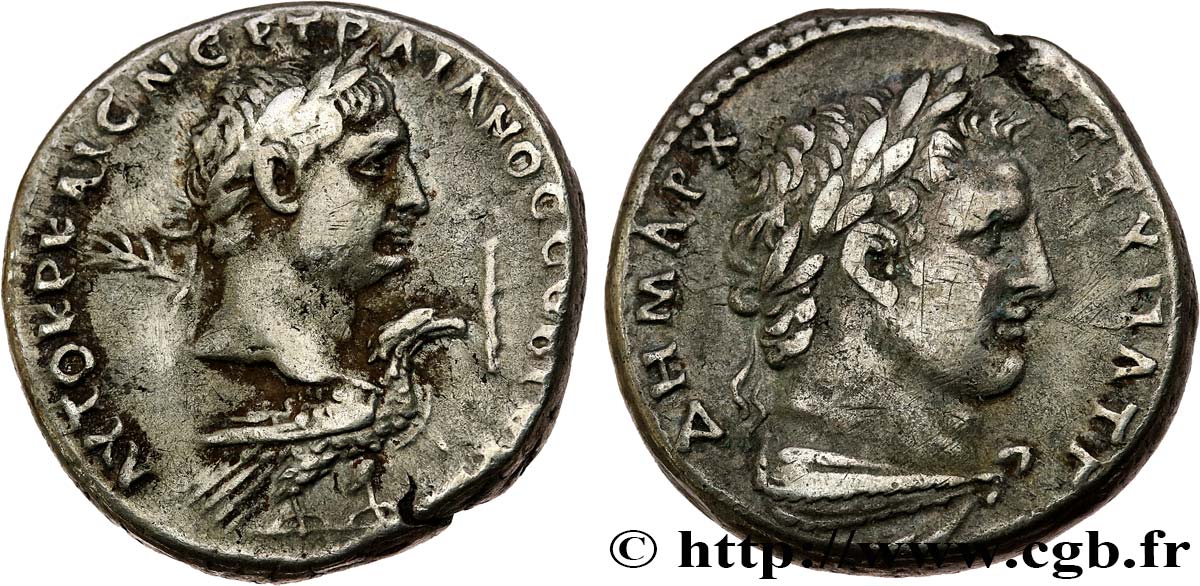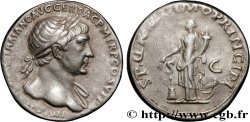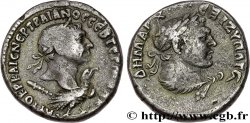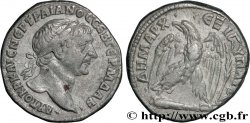Live auction - bpv_715082 - TRAJANUS Tétradrachme syro-phénicien
You must signin and be an approved bidder to bid, LOGIN TO BID. Accounts are subject to approval and the approval process takes place within 48 hours. Do not wait until the day a sale closes to register. Clicking on "BID" constitutes acceptance of the terms of use of cgb.fr private live auctions.
Bids must be placed in whole Euro amounts only. The sale will start closing at the time stated on the item description; any bids received at the site after the closing time will not be executed. Transmission times may vary and bids could be rejected if you wait until the last second. For further information check the Live auction FAQ
All winning bids are subject to a 18% buyer’s fee.
All winning bids are subject to a 18% buyer’s fee.
| Estimate : | 480 € |
| Price : | 240 € |
| Maximum bid : | 240 € |
| End of the sale : | 17 December 2024 14:15:47 |
| bidders : | 1 bidder |
Type : Tétradrachme syro-phénicien
Date: 100
Mint name / Town : Tyr, Phénicie
Metal : silver
Diameter : 25 mm
Orientation dies : 6 h.
Weight : 14,84 g.
Rarity : R2
Coments on the condition:
Exemplaire sur un flan bien centré des deux côtés, le métal légèrement éclaté à 1 heure au revers. Belle représentation du droit; Joli revers de style fin bien venu à la frappe. Belle patine de collection ancienne
Catalogue references :
Obverse
Obverse description : Tête laurée de Trajan à droite (O*) ; au-dessous, un aigle debout à droite et devant Trajan, une massue ; derrière la tête, une palme.
Obverse legend : AUTOKR KAIS NER - TRAIANOS SEB GERM DAK., (Autokratoros Kaisaros Neruaos Traianos Sebastos Germanikos Dakikos)
Obverse translation : (L'empereur césar Nerva Trajan auguste germanique dacique).
Reverse
Reverse description : Buste lauré de Melqart (Hercule) à droite, la léonté nouée sur le cou.
Reverse legend : DHMARC. .EX UPAT. G., (Dhmarcikhs Exousias Upatos g)
Reverse translation : (Puissance tribunitienne, consul pour la troisième fois).
Commentary
Rubans de type 3. Le portrait de Melqart est, sur ces tétradrachmes, plus ou moins hellénisé. Sur notre exemplaire il est particulièrement massif, probablement au plus proche de la représentation cultuelle du héros, donnant une image de force physique très impressionnante, particulièrement par le cou massif de lutteur. Ce type, attribué par Michel Prieur à Tyr est aussi parfois attribué à l’atelier d’Antioche, en particulier par Richard McAlee.








 Report a mistake
Report a mistake Print the page
Print the page Share my selection
Share my selection Ask a question
Ask a question Consign / sell
Consign / sell
 Full data
Full data












